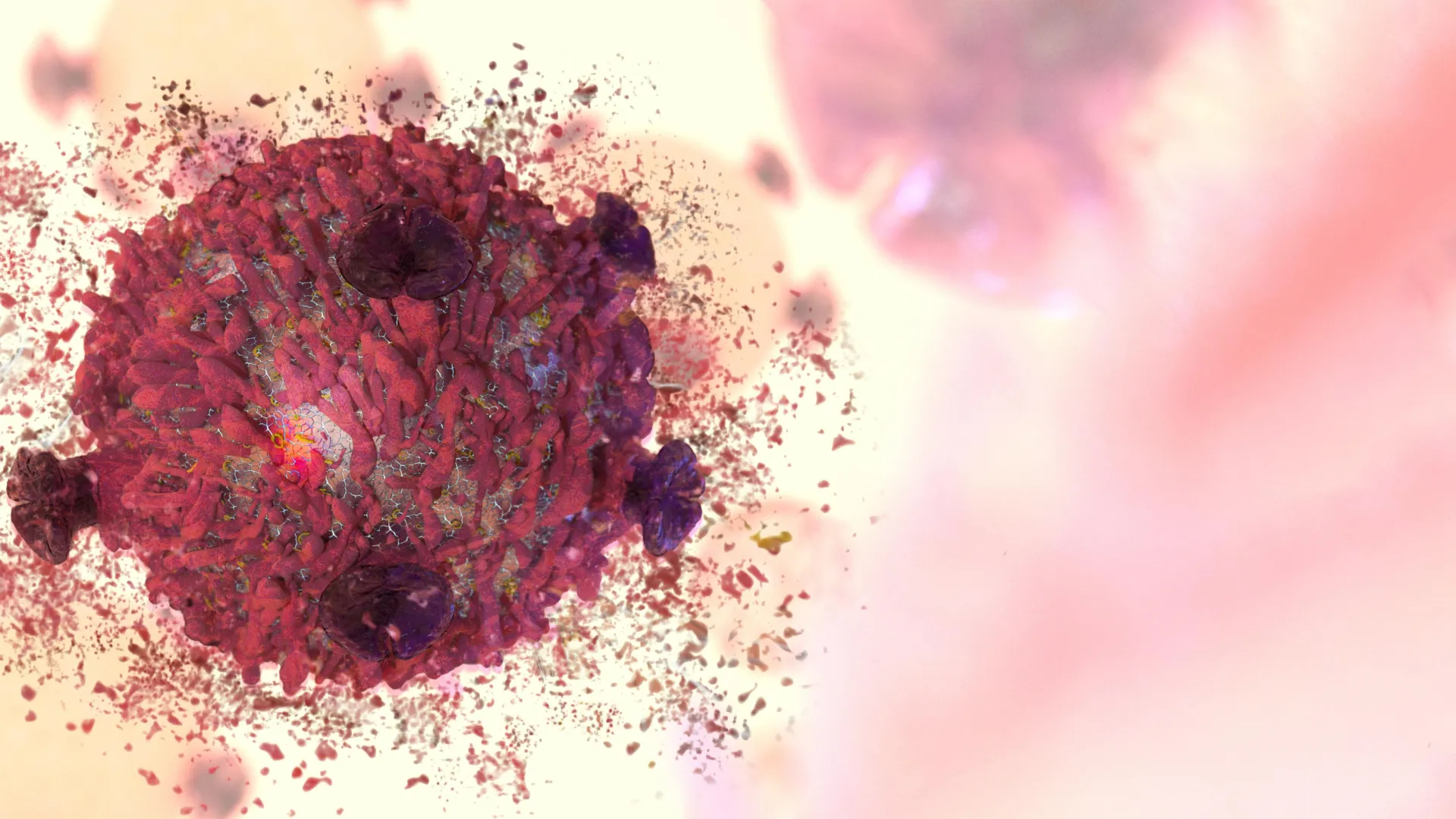I imagine this will be similar to chemotherapy.
As in, it technically affects all your cells, it just happens to affect cancer cells a lot more. In this case, because they try to absorb extra sugars in many cases.
As a chemist that makes me wonder why they dont wrap the platinum in sugar complexes
Edit: Nevermind, they have: https://www.researchgate.net/publication/316670861_GLUT1-mediated_selective_tumor_targeting_with_fluorine_containing_platinumII_glycoconjugates
one of my guesses would be that platinum catalysis is expensive as usual, but recovery of the catalyst from living being would be much worse than equivalent lab seetup, so the cost would not justify.
Cancer cells often times lose their ability to perform oxidative phosphorylation. This means they can only rely on glycolysis as a sole source of ATP… This makes them EXCESSIVELY glucose hungry.
It’s called the warburg effect. I’d have to read up on it and brush up on biochem, but that’s the basic principle.
Essentially, cancer should soak up all the harmful sugar before it hits normal cells. This makes it even safer in theory than traditional chemo like methotrexate and such
completely off topic, but you want to know how effective advertising is? every time i read a sciencific article about something exploding in a dramatic way, like this one, my mind goes 🎵 plop plop fizz fizz 🎵. how many years has it been since that damn ad?
The one my mind goes to is this xkcd https://xkcd.com/1217/
It’s too bad that curing patients is not a sustainable business model. Even if this did work we would only ever see it developed if you had to take it twice a month for the rest of your life in order to survive.
Edit: sorry, I just noticed this is in Uplifting News. So, let’s be optimistic. Maybe global capitalism will collapse and governments will start trying to take care of people.
People don’t magically stop getting sick just because you can cure them.
You’re thinking too small. If we cure cancer, everyone can start smoking again. Asbestos is back in business. There are hundreds of industries that would take off immediately. W
The company that would truly suffer is the one that makes those little stickers in California.
Sugar cures cancer
That’s all I needed to hear! Thanks Science!
Oh boi, coke just became a health product again. /s
Science also says fake sugar causes cancer, so +2 points for sugar!
To sugar! the cause of and solution to all of life’s problems.
Off to the grocery store!
What I want to know is why this compound acts this way on tumor cells and not healthy body cells. Im sure there is an explanation for that given the researchers are publishing its effectiveness, but I wish the article specified.
Oh I have a torch at home that I’ve modified to use map gas to increase the effectiveness of the pyrolysis procedure. It cures every disease know to man kind, ever meat too, even mushrooms for us vegans.
The article didn’t specify that it doesn’t. It also doesn’t say if it had to be injected right into the cancer or if there was another means of using it.
You’re assuming that the scientists have figured out why this happens, rather than just that it happens.
There’s plenty of science out there which consists of “oh, hey, look what I just noticed!“ And is just a lot of watching something happen without any explanation for it. That’s why scientists will continue to study this phenomenon until they figure it out. Probably so the company that is sponsoring them can profit from it in some way.
Basically all of astronomy, we have no “why” for any of it.
“Ah, we’ve deduced that about 27% of the universe is made of… Dark matter. Don’t ask. But more importantly…68% is made of dark energy. Also do not ask.”
Also, gravity. It’s very well understood. Mass exerts gravitational force. Like other things, it moves at the speed of light, and works in waves.
But why does mass exert gravity? NO FUCKING CLUE. Other forces work though electrical charge. But even antimatter exerts positive gravity.
Pyroptosis is a fiery form of programmed cell death that helps the body fight infections and disease. Unlike regular cell death (apoptosis), pyroptosis is dramatic and explosive—cells swell, burst open, and release inflammatory signals that alert the immune system.
Originally discovered as a defense against bacteria and viruses, pyroptosis has recently become a hot topic in cancer research. That’s because triggering pyroptosis in tumor cells can not only destroy them directly but also rally the immune system to join the attack, essentially turning the tumor into a signal flare for immune response.Maybe it’s something to do with this.
I think the commenter was wanting to know why the tumor/cancer cells go through pyroptosis in the first place, and not the healthy cells.
I’m just guessing the immune response is what protects the rest of the body from pyroptosis.
Yes… But, what‽ starts the fire in cancer cells only vs. conflagration of all the cells. That’s the mystery.
From the research paper (behind the paywall) it appears they only tested cancer cells, shown below, and on mouse models. It’s been awhile since I’ve studied this, so I don’t know if the proteins involved are specific to cancer cells or not. If not I’d assume it would kill all cells. With the mouse models I assume they injected directly into the tumor for targeted treatment, but I didn’t dive into it that deep.
Paper link: https://faseb.onlinelibrary.wiley.com/doi/full/10.1096/fj.202500412R?saml_referrer
2.2 Cell Culture
Human monocyte-like THP-1 leukemia cells (THP-1, THP-1Asc-KO, THP-1Gsdmd-KO, THP-1-Null, THP-1-defCasp1, and THP-1-defNLRP3) [4, 21] were provided by Professor Li Sun’s lab (Institute of Oceanology, Chinese Academy of Sciences, Qingdao, China), and human liver cancer Huh7.5 cells were maintained in our lab. THP-1 cells and Huh7.5 cells were cultured in RPMI 1640 medium with 10% FBS, 100 U/mL penicillin, and 100 μg/mL streptomycin at 37°C in a 5% CO2 humidified incubator. All experiments were carried out with the same batch of cell lines between passages 2 and 8.
2.15 Xenograft Tumor Mouse Model
BALB/C nu-nu male mice, 4 weeks old, were obtained from Beijing Vital River Laboratory Animal Technology Co. Ltd. (Beijing, China). A total of 3 × 106 Huh7.5 cells were subcutaneously injected into the right fore flank of each nude mouse. The daily drug treatment began when the tumor size reached ~100 mm3 and continued for a further 2 weeks as follows: EPS3.9 (30 and 60 mg kg−1 d−1, intraperitoneal injection) dissolved in assisted solvent (PBS); Control groups were given the same volume of PBS. Body weight and tumor volumes were measured every day with a balance or with a vernier caliper. The tumor volume was calculated with the formula: 1/2 × [length × (width)2]. After treatment for 2 weeks, mice were sacrificed by decapitation and tumor tissues were collected for further analysis.
It’s both amusing and a little disturbing that the term for killing the mice is “sacrifice.” I’m now imagining a bunch of researchers dancing around the mice while ritually decapitating them.
I imagine a lot of what we know now was learned after we realized the benefits of things. I’d give it a few years/decades for researchers to spend time to analyze the data and figure it out.
In the meantime, fuck cancer and hell yes to this deep sea sugar stuff!
It’s possible they haven’t discovered why yet.
So far, I’ve found two things.- The pyroptosis pathway triggered is the typical one (lots of Caspase-1 proteins get assembled into a giant inflammosome complex and attack Gasdermin D, which then starts poking holes in the cell membrane).
- The EPS3.9 molecule has a high affinity for a five separate membrane lipids.
But without any formal biochemistry training, I am missing a lot of prerequisite knowledge.
Is that high affinity above normal? Does it need to bind all five to enter the cell, or just any of them? Are those lipids, or that combination of lipids, exclusive to tumor cells? I have no info on any of these questions.
It’s also entirely possible that it’s attacking healthy liver cells too, just at a reduced rate due to cancer cells being resource hogs.
It’s probably using the metabolic pathways against itself since cancer metabolism and healthy cells metabolism are drastically different due to proliferation speeds.
I’m always a little skeptical of these claims.
But hey, if we figure out a way to do this in people safely, then cool.












